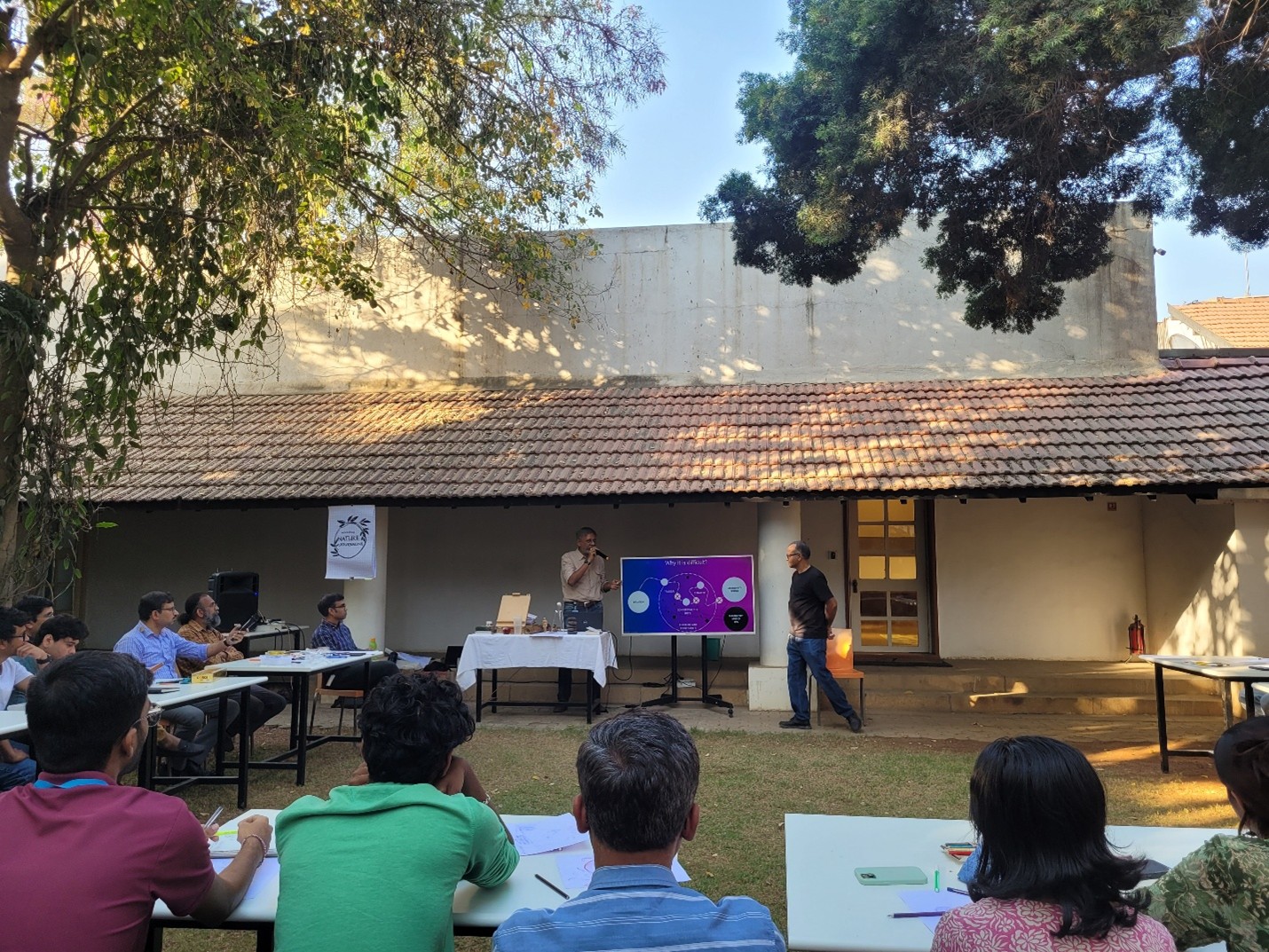

Blog
Blending Intuition and Strategy in Design Through Sensory and Serendipitous Thinking
Navigation
Navigation- Executive Summary
- The Intersection of Sensitivity and Serendipity in Design
- Sensitivity: The Designers Ability to See Beyond the Obvious
- Serendipity: The Unpredictable Path to Innovation
- Experiential Learning: Training the Designers Eye
- Conclusion: Designing with Intuition and Openness
- Looking Ahead: The Future of Creative Exploration
Executive Summary
Design is often viewed as a structured process—rooted in research, strategy, and methodologies. However, some of the most profound innovations emerge not from rigid frameworks but from serendipitous discoveries and heightened sensitivity. The third session of the Ignite 2025 series, led by design leaders Nilesh and Utkarsh, delved into the crucial role of intuition, observation, and unexpected moments of inspiration in the design process.
This workshop emphasized the importance of sensitivity in design thinking—a designer’s ability to perceive subtleties, recognize patterns, and interpret human emotions. It also highlighted the power of serendipity, showcasing how unexpected encounters often lead to groundbreaking innovations.
The Intersection of Sensitivity and Serendipity in Design
The best designs are not always born from meticulously planned processes; they are often the result of a heightened awareness of the world and an openness to unexpected insights. Sensitivity and serendipity play a defining role in uncovering these insights.

Sensitivity: The Designers Ability to See Beyond the Obvious
Sensitivity in design goes beyond functionality; it is about understanding people, emotions, and contexts. Designers who cultivate this awareness can create experiences that feel intuitive and deeply resonant. There are 3 key dimensions of sensitivity in design:
- Perceptual Sensitivity – The ability to recognize patterns and nuances in user behavior, materials, and interactions.
- Emotional Sensitivity – Understanding the psychological and emotional responses elicited by design elements.
- Contextual Sensitivity – Observing how environments, cultures, and circumstances influence user needs and expectations.
Designers who develop these sensitivities are more adept at crafting experiences that are not just functional, but meaningful and immersive.
Serendipity: The Unpredictable Path to Innovation
Innovation is rarely a linear process. Many of history’s most significant breakthroughs were discovered by accident—a testament to the power of curiosity and open-minded exploration.
The workshop explored examples where serendipity led to revolutionary design solutions:
- The Discovery of Velcro – Inspired by burrs clinging to his dog’s fur, Swiss engineer Georges de Mestral invented the now-ubiquitous fastening system.
- Newton’s Apple – A simple observation of a falling apple led to the formulation of the laws of gravity.
- The Birth of the Ford Assembly Line – Henry Ford’s efficient production model was inspired by processes observed in the meatpacking industry.
These stories highlight a fundamental principle: Great designers don’t just solve problems; they discover new opportunities where others see nothing unusual.
Experiential Learning: Training the Designers Eye
To internalize these concepts, the workshop featured hands-on exercises designed to sharpen sensory awareness and creative interpretation.
- The Cookie Tasting Experiment: Enhancing Sensory Awareness
Participants were given different cookies and asked to describe their experience beyond taste, focusing on texture, aroma, and visual appeal. This exercise reinforced the idea that small, often overlooked details can significantly impact user experience. Designers must train themselves to notice subtle elements that others might miss—whether in products, environments, or human interactions—ensuring a more thoughtful and engaging design approach. - The Scribble Challenge: Finding Meaning in Randomness
Creativity thrives in ambiguity. In this activity, participants created random scribbles and exchanged them with a partner, who then transformed the abstract lines into recognizable images or concepts. This illustrated how different minds interpret the same input uniquely, highlighting the importance of embracing uncertainty and allowing room for unexpected connections—an essential principle of innovation. - Noticing the Unnoticed: Looking Beyond an Object’s Function
Participants examined everyday objects, considering their material, form, and evolution rather than just their intended function. This exercise encouraged them to think beyond what something is and explore what it could be, fostering a mindset of continuous curiosity and creative exploration.
Conclusion: Designing with Intuition and Openness
Design is not just a methodical process but an intuitive and explorative journey. While structured methodologies provide a strong foundation, the most impactful solutions often emerge when designers cultivate a deep awareness of human experiences, remain open to unexpected discoveries, and see possibilities where others see routine. Sensitivity allows designers to tune into subtle details that shape user experiences, while serendipity fosters innovation through unplanned yet meaningful insights. By embracing both, designers can break free from conventional thinking and create solutions that resonate on a deeper, more meaningful level, ultimately shaping a more intuitive and human-centered design landscape.
Looking Ahead: The Future of Creative Exploration
The future of design lies in balancing structured methodologies with intuitive exploration. Sensitivity to human behavior, emotional responses, and environmental context will drive more user-centric solutions. At the same time, embracing serendipity will unlock new avenues for innovation, allowing designers to discover opportunities beyond conventional frameworks. As technology and human intuition converge, the next phase of design will prioritize adaptive, emotionally intelligent, and meaningful experiences—transforming the way products and services connect with users.







